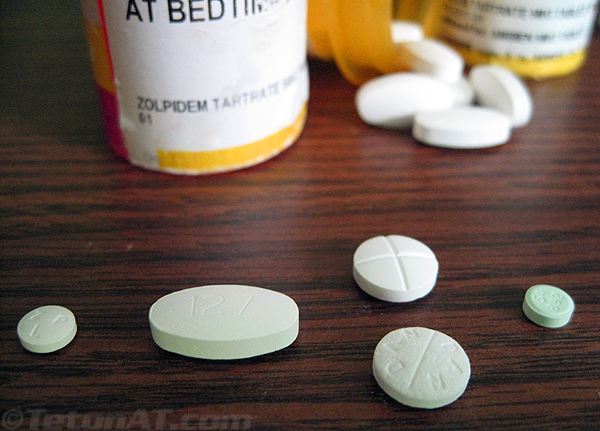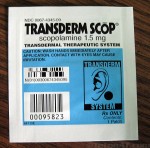 If there is one thing I hate…it’s taking pills. I don’t really like to mess with my body, I rarely get sick enough to warrant taking prescription medications and I often to prefer to feel like crap than mask what my body is going through. That being said, you also want to stack the odds in your favor when traveling, since your time is limited to enjoy what you can. Antarctica and Aconcagua will present a variety of different challenges to the body and these are a few of the prescriptions that I’ve gotten to help battle them.
If there is one thing I hate…it’s taking pills. I don’t really like to mess with my body, I rarely get sick enough to warrant taking prescription medications and I often to prefer to feel like crap than mask what my body is going through. That being said, you also want to stack the odds in your favor when traveling, since your time is limited to enjoy what you can. Antarctica and Aconcagua will present a variety of different challenges to the body and these are a few of the prescriptions that I’ve gotten to help battle them.

Zolpidem Tartrate, Ciprofloxacin, Acetazolamide and Dexamethasone.
Zolpidem Tartrate (Ambien, 5mg)- Used to treat sleeping problems. It is a sedative/hypnotic and acts on your brain to product a calming effect. Side Effects: dizziness, lightheadedness, headaches, upset stomach, diarrhea and dry mouth.
I’m not a big sleeper and I have trouble sleeping in cars, on planes, camping and even just napping at home after a long day in the mountains. My flight from Atlanta to Buenos Aries is overnight, so this is mainly to help me get some sleep on that flight…and I guess if my roommate on the Ski Cruise snores a lot. Even though it might help me get some much needed rest on Aconcagua, I don’t want it messing with my head, as I will most likely already be lightheaded and dizzy from the altitude.
Transderm-Scop (The Patch, 1.5mg)- Used to prevent nausea and vomiting caused by motion sickness. It acts on the brain by blocking signals that cause throwing up, and also corrects the imbalance of hormones associated with motion sickness. Side Effects: blurred vision, dry mouth, drowsiness, dizziness, decreased sweating, constipation, and mild itching where it is applied to the skin.
 I am not good at all with motion sickness. I hate amusement rides and have even gotten a little nauseous when surfing…though most likely from the salt water I probably swallowed. I will definitely be using The Patch on the sail across the Drake Passage to and from the Antarctic Peninsula, and depending on how the zodiac shuttles to the shore everyday go…maybe for the entire duration of the trip.
I am not good at all with motion sickness. I hate amusement rides and have even gotten a little nauseous when surfing…though most likely from the salt water I probably swallowed. I will definitely be using The Patch on the sail across the Drake Passage to and from the Antarctic Peninsula, and depending on how the zodiac shuttles to the shore everyday go…maybe for the entire duration of the trip.
Ciprofloxacin (Cipro, 250mg)- Used to treat bacterial infections related to gastro-intestinal infection…”the runs”. It is a flouroquinolone antibacterial drug and kills bacteria by messing with the enzymes that cause it’s DNA to duplicate. Side Effects: irreversible peripheral neuropathy, weak tendons, acute liver failure/injury, lengthening of the heartbeat, severe central nervous system disorders, sensitivity to sunlight, +++.
I think my mother has scared me the most over the years about being very picky when traveling and eating in countries that might not be as clean as the United States in regards to public water supply, manufacturing practices and waste disposal, and it sucks to get the diarrhea when traveling…never mind camping. That being said, I’m pretty sure I’ll be okay on the boat and in Antarctica (more susceptible there to testosterone build up more than anything), but could Cipro be vital in helping me not loosing it completely on Aconcagua…no pun intended.
Acetazolamide (Diamox, 250mg)- Used to treat glaucoma, epileptic seizures, intercranial hypertension, altitude sickness, kidney stones and dural ectasia (sweeling around the spinal cord) Diamox is a carbonic anhydrase inhitbitor and helps reduce the symptoms associated with AMS (Acute Mountain Sickness). Side Effects: numbness and tingling of the fingers/toes, reduced ability to taste food, increased urination and blurred vision.
Obviously for Aconcagua, but he general goal is to listen to my body, acclimatize properly, and not take any meds relating to acclimatizing and altitude sickness. However, if I start rocking a severe headache at altitude, Diamox might be just enough to relieve the pain of headaches associated with AMS and allow me to get a good nights rest.
Dexamethasone (4mg)- Used to treat arthritis, immune system disorders, allergic reactions, skin and eye conditions, breathing problems, bowel disorders, cancer and altitude sickness. It is a corticosteroid hormone and reduces swelling and allergic type reactions. Side Effects: upset stomach, headache, dizziness, insomnia and increased appetite.
Hopefully we’ll be able to avoid getting so far out there that we need Dex, but if the shit hits the fan, a prudent climber is always prepared, so I’m bringing some for Aconcagua. Though I’ve heard that Dex is more effective in a liquid/syringe form, it can be hard to keep it from freezing, so I opted for tablets. I’ve also heard that you’re kinda toast, as far as your trip goes, if you need to take Dex in the end, but if you’re having symptoms of HACE (High Altitude Cerebral Edema)…it may just save your life.
Backcountry.com. Cool styles like the Mountain Pant and Alpine Utility included!

bringing any pain medication? definitely would be a good idea to have some along on aconcagua just in case. is it bad that i know what each of those pills are by their shape and markings?
i have some low-mid grade stuff…but i think there will be some heavy duty stuff in our group med kit.
and as far as knowing the pill goes…i guess it depends on your profession. drug dealer, nurse, doctor or ems worker…its probably pretty good idea you know what each pill looks like. when going though my meds, i had trouble identifying one of the tablet..but luckily there are websites out there that tell you want the medication is by what the pill looks like.
Given what’s been going on lately on this blog and attempting to bring some humor to the situation, I just couldn’t resist asking Rando Steve this question–Are any of the drug makers listed above one of your sponsors?
How else would I be able to afford my bid to ski the Seven Summits!
Well, if you shoot up with something good you might get to ski them all tonight 🙂
ur bringing drugs to south america?
nah…why would you say that?
are you a hypochondriac? is travelling that difficult for you? maybe you should try something a little more natural
Well golly-gee mister super-duper world-traveling GlobalRider…I sure don’t think so? 🙄
And I don’t think any of these meds are that out of the ordinary for someone traveling with long flights, sailing in potentially high seas and climbing to an altitude over 20,000′.
On a totally unrelated topic…… I’ve been looking at the Arcteryx Fury pants and noticed you gave them a thumbs up on teletips last year. Do you still really like them? How warm are they (I overheat pretty easily), say compared to normal shell pants or to traditional soft shells (like Cloudveil Symmetry or Rayzar)?
I love the Fury Pant. It is a bit warmer than a standard shell pant since it is Windstopper and has a thin fuzzy lining…but they also have easy access side zips which help dump heat well. They are also quite bomber with nice double cuffs on the leg and have lots of paneling so they fit great. The Fury is my go-to pant in the winter months…after that…I use the Gamma MX and Gamma LT pants for warmer spring temps.
Tough to compare the Fury to a Symmetry or Rayzar…since they are both stretch woven pants like the Gamma LT and Gamma MX. Where as the Fury is a laminate…like the Gamma MX and any other Windstopper, Gore-tex, etc…pant.
A couple observations from 18 months spent in an altitude chamber studying the mechanisms underlying AMS and its treatment with acz and dex. Both acz and dex are very effective for treating AMS. Once sick, every subject showed significant improvement in AMS symptoms (headache, nausea, appetite, fatigue, dizziness, etc) when treated with either drug. That said, people reported feeling better overall when on dex. It produced almost a euphoric feeling and this was obvious to any observer. The best way to describe it would be an increase in vigor. One potential problem with dex is that it can make you more aggressive rather than euphoric. We didn’t see this in any of our 50 subjects but it has been widely reported.
It sounds as though you won’t be taking any prophylactic meds for AMS. I think this is a wise decision. One interesting thing we found was that people who are not susceptible to AMS (i.e. don’t get sick on placebo) show AMS like symptoms when on acz. This wasn’t something we saw in one or two people either; it occurred in about half of our non AMS group.
Good luck.
Andy…18 months in an attitude chamber? Time to send it!!!! 🙂
Thanks for the info. Although euphoria sounds pretty appealing…I’m not sure I want to skiing all weirded out on meds. Hopefully I won’t have to resort to taking them.